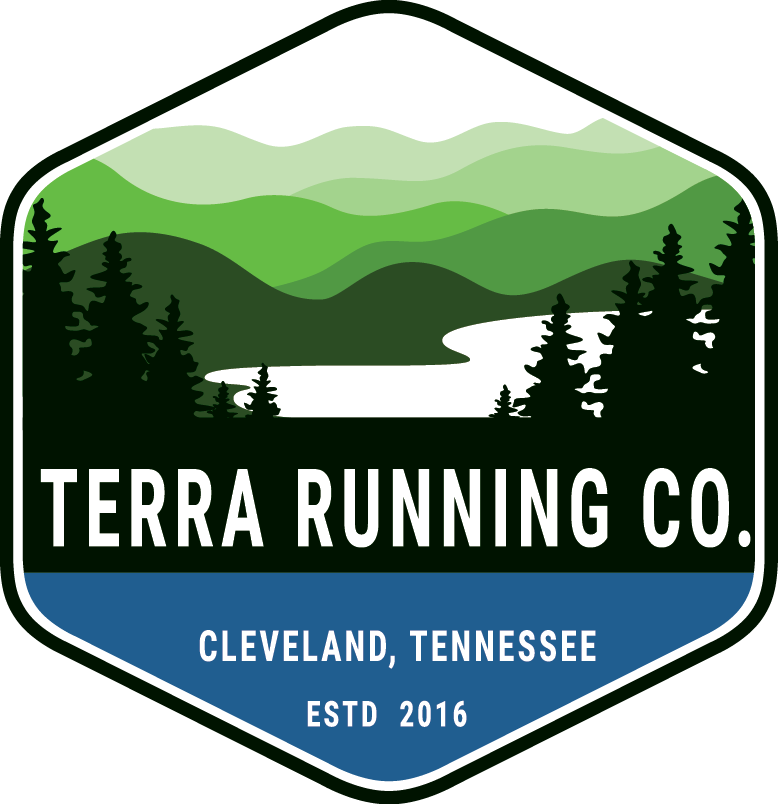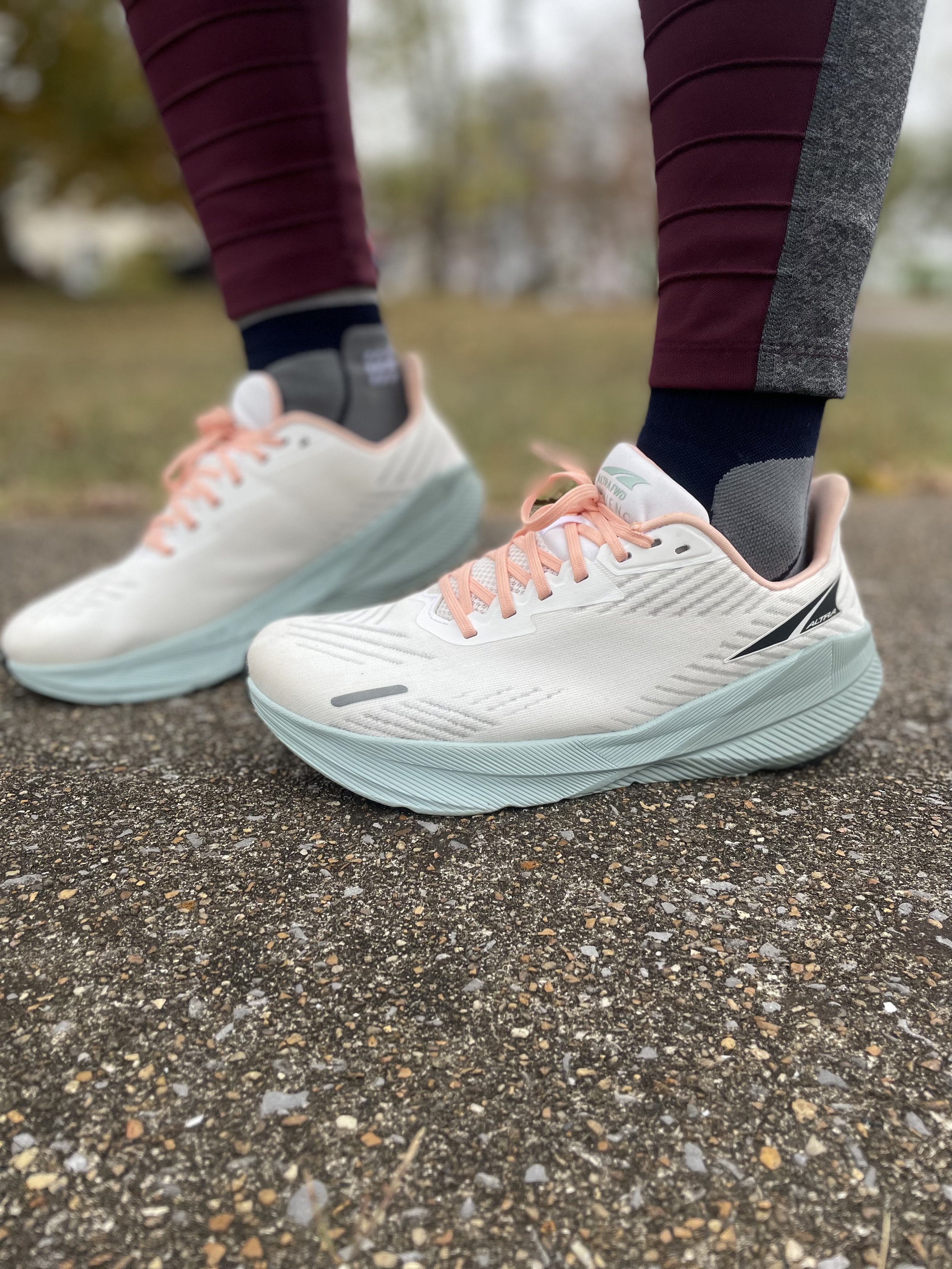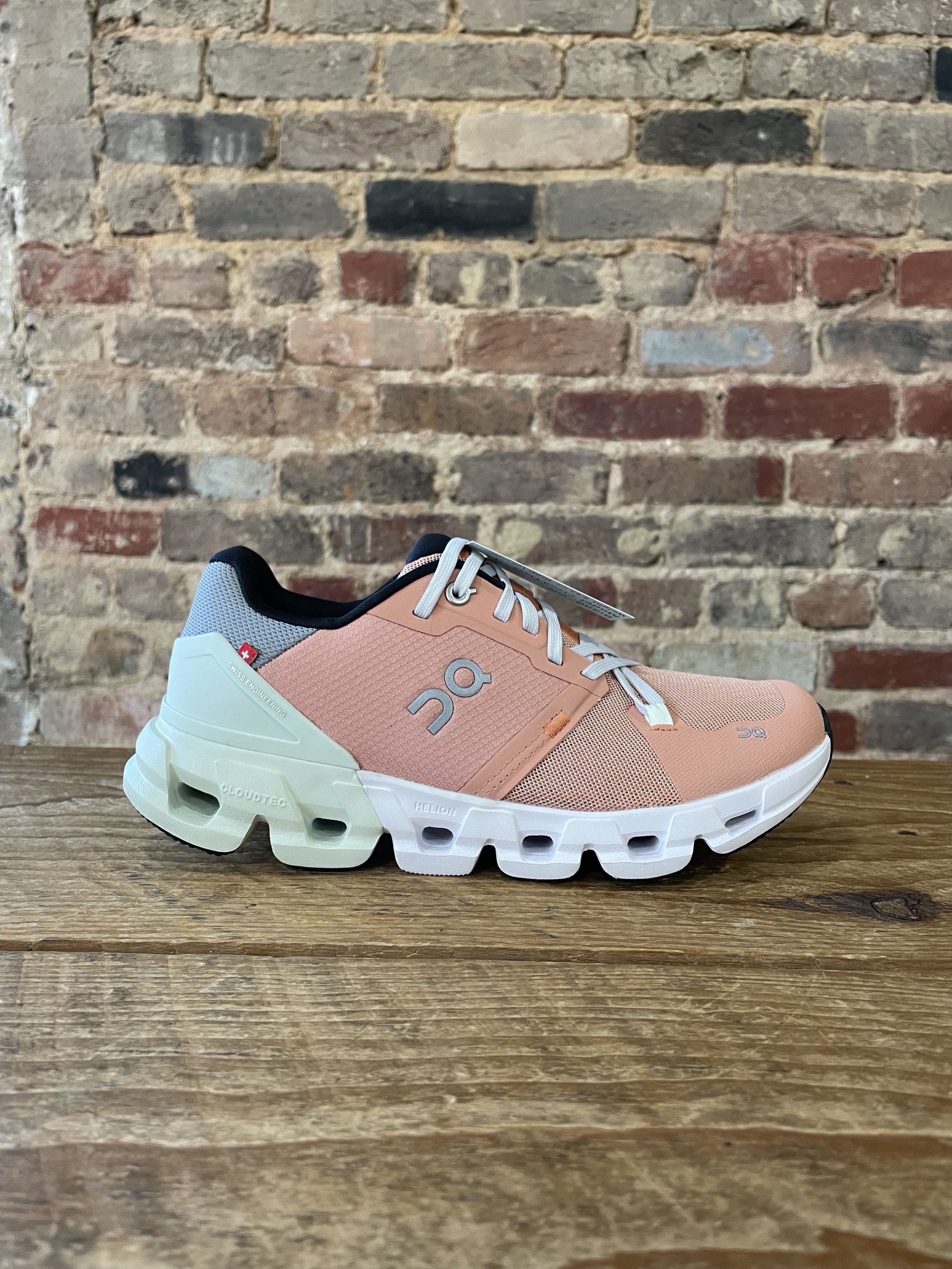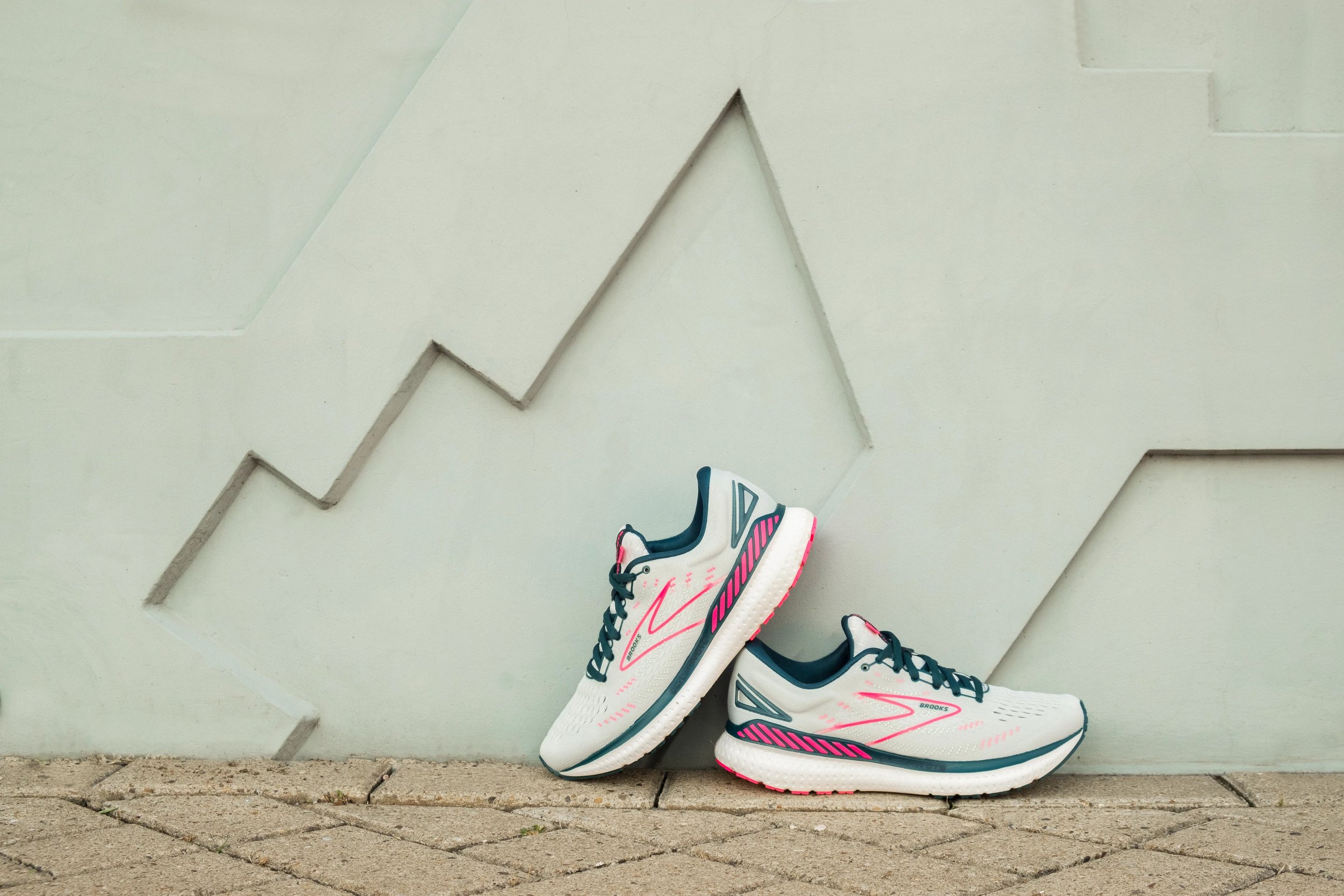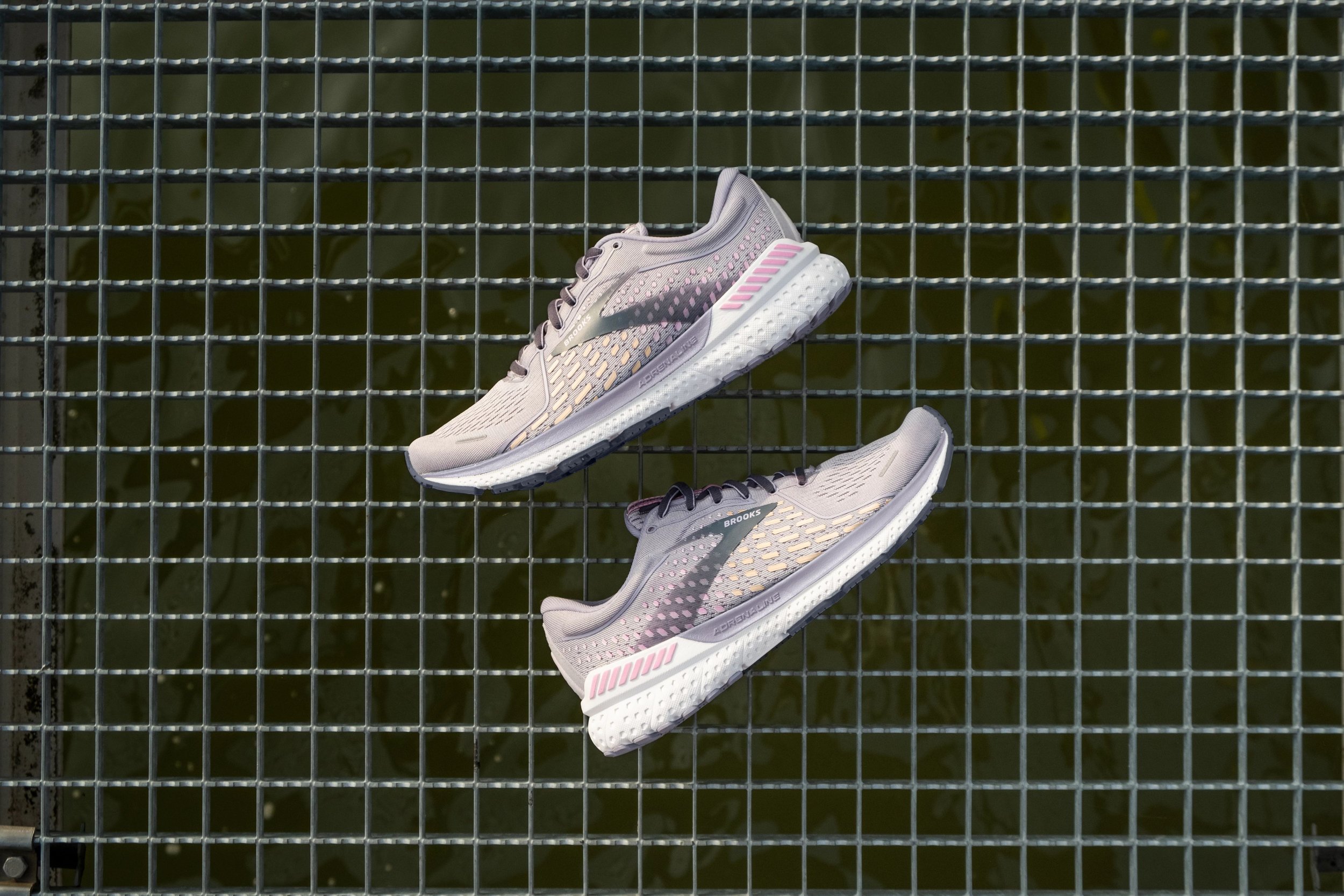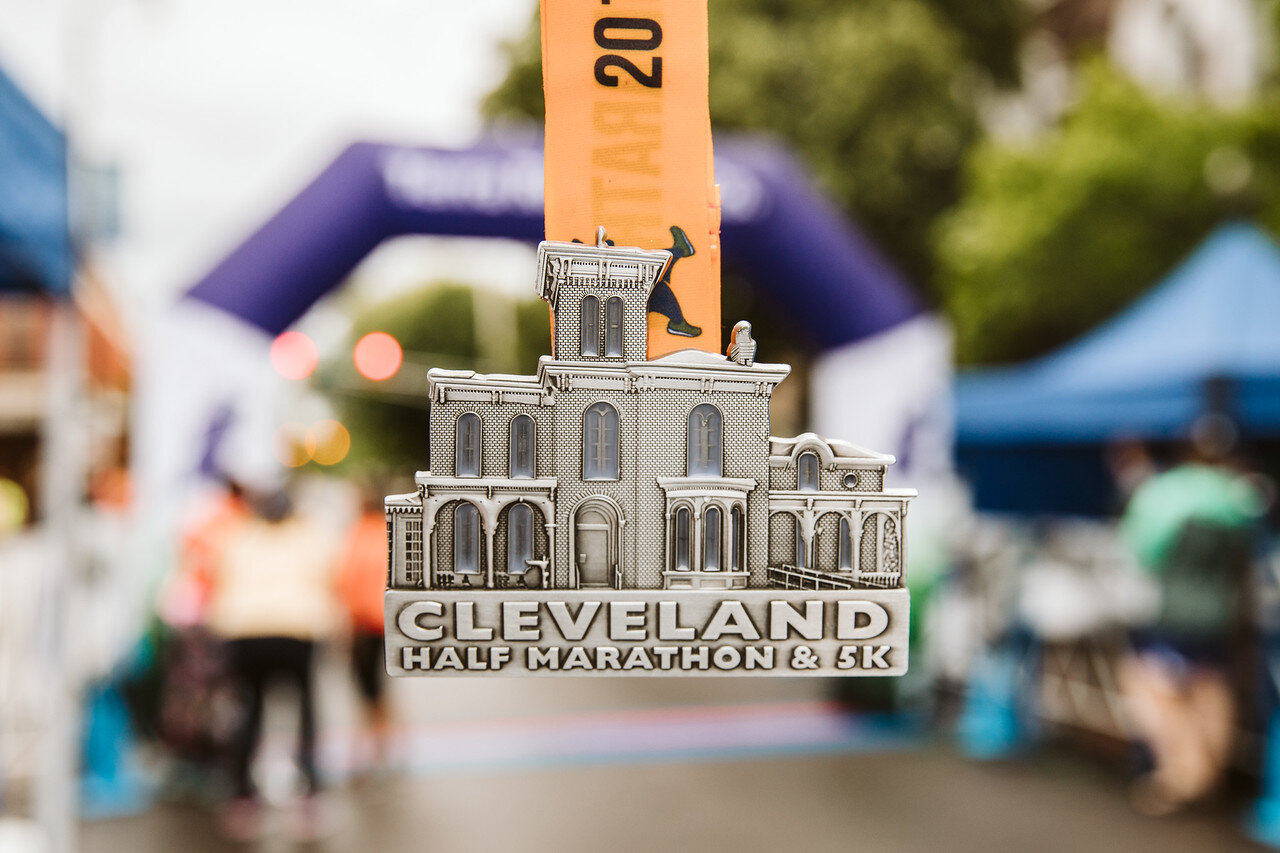
The Altra FWD Experience
Even if you are not a fan of Altra’s shoes you probably know that the brand is known for its “zero-drop” platforms and “foot-shaped” shoes. With shoes that put you on level ground and allow your toes room to splay out, a natural gait is encouraged and injuries are (hopefully!) prevented. This is why Altra, since the brand’s start in 2011, has offered only “zero-drop” shoes.
But all of this changed a few months ago when Altra introduced the world to their first-ever non-zero drop shoe, the AltraFWD Experience.
My Altra FWD Experiences after their first run
The AltraFWD Experience is still a very low-drop shoe, coming in at 4mm. For context, this is the same drop as the Hoka Bondi and one millimeter lower than the Hoka Clifton. The AltraFWD Experience also has a noticeable rocker shape, aimed at facilitating a faster toe-off. For the midsole, Altra went with a new compression-molded EVA instead of their beloved EGOmax foam. The upper is a breathable mesh and, quite frankly, the shoe just looks really good. But no matter how pretty a shoe, runners want to know: “How does it perform?”
With a couple of weeks of running on my pair, here are my thoughts:
Geometry
One of the things I love most about low-drop shoes is how they encourage a more natural gait and midfoot strike (versus a heel strike). While I know that is not everyone’s experience, for me it is noticeable. On the AltraFWD Experience, the low drop, paired with the rocker geometry, had my running form looking and feeling better than it ever has. I don’t know what it is about it, but I felt like I was running correctly. I know, I know! There is (supposedly) no real right or wrong gait BUT this shoe had me gliding over the pavement. I really like the rocker in it, more so than any other shoe with a rocker I have run in before.
Midsole
The midsole in the FWD Experience is a compression-molded EVA. To my understanding, they have not put this foam in any of their other shoes. Most Altras (all?) utilize their EGO or EGOmax material which is much softer than what you get with this EVA. While there is plenty of material under your foot it doesn’t particularly feel cushioned. Think protective and supportive. When running in it, it feels dense. Not unresponsive but not responsive either. Almost like, you run a step and the impact is absorbed by the shoe but there is zero energy given back to you even though it is still helping you pick up the pace. This felt surprising; the rocker and 4mm drop had my feet turning over quickly but I didn’t feel like I was going faster (even though I was). It is a strange paradox.
Outsole
The shoe seems to be holding up well, though, with just over 30 miles on them, it is too early to tell (that being said, I have had shoes show wear on the sole after 10 miles). I do expect the firmer midsole to last longer than something softer. The outsole grips well on dry surfaces but I did notice that I felt less sure-footed when I was trying to pick up the pace on a rainy day. That being said, I think I would have felt the same way in most of my other shoes.
Upper and Fit
I have the white colorway and, predictably it is now dirty. That is the price you pay for beautiful white shoes! So far, I have no concerns with the actual upper, laces, or stitching. I do think the AltraFWD Experience runs a bit on the small side, so it could be worth going up a half-size when choosing your pair. The footshape is made on Altra’s “Standard” last, the same shape as the Torin, Paradigm, Timp, etc.
Conclusion
I have gone back and forth from, “I love this shoe!” to “The midsole feels dead, so it’s not that fun to run in.” After giving it a few more runs, I have decided that I really do like this shoe. Even if I don’t feel fast in it, it is noticeably easier to pick up the pace in this shoe than in others. I think it is perfect for tempo runs and protective enough for longer miles. Sure, you might not feel like you are driving (the shoe equivalent of) a sports car, but if it performs like one, then does it matter? In the future, I would love to see Altra give this shoe a slightly softer, more responsive feeling midsole. I think at that point, it would woo over a lot of Hoka Clifton junkies who are looking for a faster, more durable shoe.
While diehard Altra fans may be upset that the brand is starting to offer some non-zero-drop options, I am personally excited to see this move. As long as Altra keeps making zero-drop shoes (and that is not changing!) I am more than happy to have some other Altra options for myself and our customers. While the AltraFWD Experience might not be the perfect shoe (yet!), I think it is a step in the right direction (no pun intended). By offering more variety in their lineup, they open their brand up to runners who may be afraid to jump head-first into a zero-drop shoe. This also gives Altra fans something different to add to their rotation which will ultimately help ward off overuse injuries, especially on days when their calves are extra tired. Now that the zero-drop-only restriction has been lifted, I am excited to see how Altra plays a bit more with its shoe designs while staying true to the science behind low and zero-drop geometry.
Why do my new Altra shoes fit differently?
While Altra is almost 15 years old as a company, it’s still among the youngest brands in running shoes. It began in 2009 when a couple guys felt that the running shoes they could buy at their local store were hindering their natural gait. They wanted a balanced shoe (that is, zero-drop) and a roomier toebox.
14 years later, not everyone is sold on Altra’s model, but it has carved a permanent space for itself in the performance shoe world. For those of you who love Altra, you may have noticed that, when it comes to the shape of the shoe, not every Altra shoe is made the same. We’ve had devoted Altra fans walk away disappointed that a new model is “too slim” in the toebox. Or, we’ve had customers who, never interested in Altra before precisely because of the roomy toebox, find that they love the newest model because it “fits like a normal shoe.”
So what’s happening here? Has Altra strayed away from its core values? Or is every other brand getting wider, making Altra seem not so special anymore? The answer is actually rather simple, and it’s a natural outflow of Altra’s growth as a company.
While Altra has retained their “Footshape Fit” (that is, a roomier toebox), they have divided that fit into three categories: Slim, Standard, and Original.
Slim is shaped more like a classic running shoe, but it still rounds out in the toebox, providing extra space for your toes to splay. This is found in their Rivera 3, Outroad, and their road racing shoes.
Standard is their medium fit, landing somewhere between Slim and Original. This shape is found in many of their daily training models, like the Provision 7 and Torin 6. This fit will definitely feel roomier than your average running shoe.
And Original sticks to the tried and true early days of Altra. This is your classic Altra shape, and it’s found in models like the Lone Peak 7 and the Via Olympus. These are the shoes that will often fit even those who often wear a wide in other brands.
With this shift, Altra is able to better meet the preferences of a broader group of runners and walkers. There are plenty of athletes with slimmer feet that want a zero-drop shoe, but who don’t need the space that a classic Altra shoe provides. And many of us will do just fine with the space provided by their Standard fit.
So whether you’ve been a longtime Altra devotee, or you’re considering trying its shoes out for your next pair, you’ll likely find a pair that works for you. Check out this link to see a visual representation of Altra’s different fits.
New Fall 2022 Shoes
Fall is a bustling time in the run specialty world. New shoes and updates are dropping left and right, and that means new shoes at Terra! Check out some of our newest offerings.
Altra Via Olympus
While we’re excited about all our new models, the Via Olympus might be the standout of the bunch. The first max cushion road shoe from Altra, the Via comes with a whopping 33 mm of foam underfoot! That’s the same as the Bondi 8, but without any drop to the forefoot, the Via is actually a thicker shoe. If you didn’t know, Altra has three different shoe fits: Slim, Standard, and Original. The Via is Original, meaning it’s got maximum space for your toes to splay, and a mile-wide, stable platform. This shoe’ll work best for those running major miles on the road, working long shifts on their feet, or looking for a cushy recovery day shoe. Don’t be fooled by the marshmallow look, though: with its rockered shape, the Via will still keep you moving if you pick up the pace.
Altra Provision 7
It would be easy to let the launch of the Via Olympus overshadow a small update to an Altra classic, but certainly don’t ignore the Provision 7. Though it’s billed as a daily trainer, the Provision 7 is an astoundingly soft shoe. Coming in a little slimmer and lighter than the Via, this is a do-it-all road trainer. It’s a stability shoe without feeling clunky, and the rubber outsole is aggressive enough that I’d feel comfortable taking it offroad. This is an ideal shoe for someone looking to try Altra for the first time.
ON Cloudflyer 4
While not an overhaul, the Clouflyer 4 is a welcome update to a solid daily trainer. ON has prioritized comfort with this iteration: the tongue is pillow-plush, the ride is a tad softer than the previous version, and they’ve expanded the dual-density foam to enhance stability. The Cloudflyer also comes in a wide option, a rarer offering for ON.
ON Cloud X
We’re amped to announce the addition of a mixed-sport shoe into our lineup! Many of our customers come in looking for a gym shoe, something they can do a little bit of everything in. While most of our shoes are versatile enough for gym use, the Cloud X is our first shoe built for the gym. It’s lightweight, low profile, stable, and a bit firmer than a traditional running shoe, making it perfect for a fast-paced, explosive workout where you change direction and activity often. You can run in these shoes, but we recommend keeping those runs short and indoors, which is where the Cloud X is designed to excel.
Brooks Ghost 15
The Ghost is one of Brooks all time best sellers for a reason. It is a go-to trainer for any situation with great fit and durability. For this15th iteration, Brooks has updated the cushioning to be lighter and slightly less dense resulting in a plusher shoe. They have also improved the upper with a 3D print fit for added structure. But Ghost fans don’t have to worry, Brooks knows better than to mess with their customers’ favorite. Fans of the Ghost will love this new update.
We're All About Altra!! Terra Girls Episode 5
Come along with Brittany and Tiff as they take a trip to Chattanooga to meet up with their Altra Rep, Vince, at the Moxy Hotel. Some important questions will be answered like, will Brittany get snacks, what's the new Altra trail shoe look like, and again (and most importantly)... will Brittany get snacks?
What is Heel-to-Toe Drop?
“Heel-to-toe drop” is a term that often gets thrown around when comparing running shoes. Maybe you’ve heard of this mysterious phrase or maybe you haven’t. The good news is it’s a pretty easy concept to understand; it simply means the difference in height between the heel and the forefoot of the shoe. The even better news is, if you’re a beginner runner, you probably don’t even need to worry yourself with it. Simply getting into a quality shoe will get you to where you need to be. However, if you’re getting a bit more into running, are thinking of switching up shoes, or are trying to figure out how to best address a recurring injury, heel-to-toe drop can be a interesting concept to explore.
Heel-to-Toe Drop vs. Stack Height
Brooks Ghost: 12mm drop; Hoka Bondi: 4mm drop; Altra Torin: 0mm drop
First things first, let’s cover some terms. Like we have already mentioned, heel-to-toe drop (or “drop”) is the difference between the heel and forefoot in the shoe. As an example, a high heel shoe has a very high heel-to-toe drop, whereas, if you are walking around barefoot, there is zero drop. So what then is “stack height?” Stack height is how much height is in between your foot and the ground when it is in the shoe. If you’ve ever put on a pair of Hokas and felt like you gained 3 inches, that’s because it has a very thick midsole and thus, a very high stack height. Generally, the more stack height the more cushion the shoe has (though certain materials will feel softer than others). The reason this is helpful to understand when talking about heel-toe drop is because people often get them confused. This is probably because lower or zero drop shoes are often associated with the “minimalist” running movement that was very popular about 10 years ago (think of the book Born to Run or the FiveFinger shoes). While this is somewhat true — proponents of zero drop shoes often are because they believe it is healthier and more natural for your feet— it is not completely true because you can get low or zero drop shoes that have tons of cushion (very unlike those Five Finger shoes). As an example, most Hokas would fall in the low drop category. In fact the Hoka Bondi, our most cushioned shoe in stock, only has a drop of 4mm. Contrast that with the Brooks Ghost which has a drop 3x that at12mm.
Why does this matter?
Courtesy of RunRepeat
It is important to restate that most people don’t need to concern themselves too much with heel-toe drop. That is what we are here for! Come into Terra and we will talk to you about your needs, any injuries you have or have had, what shoes have felt good in the past, etc. But for those who are interested in learning more about running or are wanting to explore how different shoes effect their body and gait it is helpful to consider. This is because research does shoe that lower drop shoes put more load on your feet, ankles and Achilles, whereas higher drop shoes put more load on your hips and knees. This can be good to know if you had or have an injury. Lower drop shoes also have been shown to improve runner’s cadence (the amount of time it takes for you to toe off), while higher drop shoes increase the amount of foot switch time between strides. Studies have also shown that runners were 9.2x more likely to run with a forefoot strike in minimalists compared to regular running shoes, so if you are trying to work on landing more on your forefoot it could be a good idea to test out a lower drop shoe. This being said, that same study showed that, even though runners were almost 10x more likely to run with a forefoot strike in a more minimalist shoe, 70% of runners in minimalists continued to rearfoot strike (Cheung et al. 2016). This matters because a lot of more “minimalist shoes” don’t have the necessary cushion to protect heel-strikers which could potentially put someone at more risk for injury. Because low or zero drop shoes also put more load on the feet, ankles and Achilles, if you are switching from a much higher drop shoe, there is more risk of incurring an injury if someone does not adequately ease into the shoe.
So which is best?
There is not necessarily a “best” drop since it all depends on the runner and what their needs are. Me personally? I like lower drop shoes. I feel the effect it has on my cadence and running form. But I frequently have customers who come in and specifically request higher drop shoes because they like how it feels for them. If you’re not sure what you like, try to think of shoes that you have loved in the past and find out what the drop was. If you have a few different shoes to pull from you might see a pattern… but then again, maybe you won’t! Remember, it is healthy to mix up shoes to help prevent injury. This is because it spreads out that load across different parts of your body. At the end of the day, having a fresh pair of shoes will help keep you injury free regardless of their drop.
What We're Wearing: Shoes (Brittany)
What shoe are you currently running in and what were you running in before this shoe?
Women’s Brooks Glycerin GTS 19
I am on my third pair of the Brooks Glycerin GTS, now the version 19. I need a bit of stability when I run, but I love the cushion. I did a triathlon this year and the extra cushion felt super nice off of the bike. My "kick-its" are the Brooks Glycerin 19. I try to wear a neutral shoe when I'm not running to help strengthen my feet, but I can't seem to get away from that cushion! I also love the On Cloud for slipping on to walk the dog or run to Target. I have been wearing the Altra Torin 5 to do weight training recently. I love the zero drop, but also still need good cushion! The wide toe box is nice for foot stability. Finally, my "dress up" running shoes are the Roger Center Court from On. They are dressy for me, all white and match everything.
Who would you recommend the shoe for?
I would recommend the Glycerin or Glycerin GTS to anyone who likes the fit of a Brooks shoe, wants that extra cushion but may not be interested in a max cushion shoe. Both the Glycerin and Glycerin GTS are relatively light and are long lasting.
Brooks Adrenaline GTS 22
What shoe are you planning on running in next?
I am interested in trying the new Brooks Adrenaline GTS 22. It is softer than the previous models of the Adrenaline, so I think it will be closer to the Glycerin GTS. I like that it's lightweight and the upper fits well. It has the same guide rail support that the Glycerin GTS has.
What advice would you give someone who is looking to venture out and try a new shoe or brand?
Lots of people ask for our favorite shoes when we're working in the running store. We have the luxury of being able to try on all of the shoes and compare, and I have never really been loyal to one brand or one shoe model. I like to have different shoes for different activities, whether it's walking my dog, running, or weight training. All of the brands we carry are top-of-the-line running shoe brands, and no one is better than the next. Even if you've never tried a brand before, if it's in our store, I can personally vouch for the quality!
Customer Spotlight: Andrew Crouch
By Brennan Humphreys
I recently went for an early morning run with my good friend and trail enthusiast Andrew. We did a few quick miles on the trails at Johnston Woods, and afterwards Andrew was gracious enough to share a bit about himself as a runner, as well as some of his favorite gear from Terra.
Describe yourself as a runner, Andrew.
Inconsistent! I opt for the trails. I like feeling the trail--not to be too hippie, but I like feeling one with nature, in touch with the whole experience.
What animal do you most identify with when you run?
Given my last name, I have to say tiger. I’m known as Crouching Tiger in a past life.
What’s your favorite running spot in Cleveland?
Does here count? When I want to go for a run in the evening, I’ll drive ten minutes just to go to Johnston Woods so I can get a good 3-mile loop in.
What are your preferred shoes?
I’m really enjoying my Altra Lone Peaks for trail running. I prefer running in my Lone Peaks so that I’m getting the protection that I need from the hard rocks and roots, but I’m also getting the full feel of the trail. When I run on the Greenway, I wear my Altra Torin 4.5s. I don’t like the feeling of pounding on the concrete, but the cushion on my Torins helps with that.
Favorite running accessory
Intimate or otherwise? I’ll say SAXX underwear. It’s really important.
Favorite outdoor activity besides running
Either yoga on the dock at Johnston Woods, or hammocking.
Favorite CC&M drink?
Cloud Brew!
If you could run with any famous person?
Chris Evans, as Captain America
Anything else you’d like to share about the Lone Peak?
I like that I get all the protection I need. I never hurt from these shoes. My toes are able to spread out, and I can really feel the trail while I’m running on it, so that I can keep balance. It’s incredible, how you can get both/and: all the protection you need while also feeling the trail!
Andrew runs in the Altra Lone Peak 5, a trail shoe that we carry in both men’s and women’s sizes. Like Altras road running shoes, the Lone Peaks have a 0mm heel-to-toe drop for a balanced, natural ride, and their foot-shaped toebox helps your foot move like it’s meant to, while still providing exceptional protection and traction.
